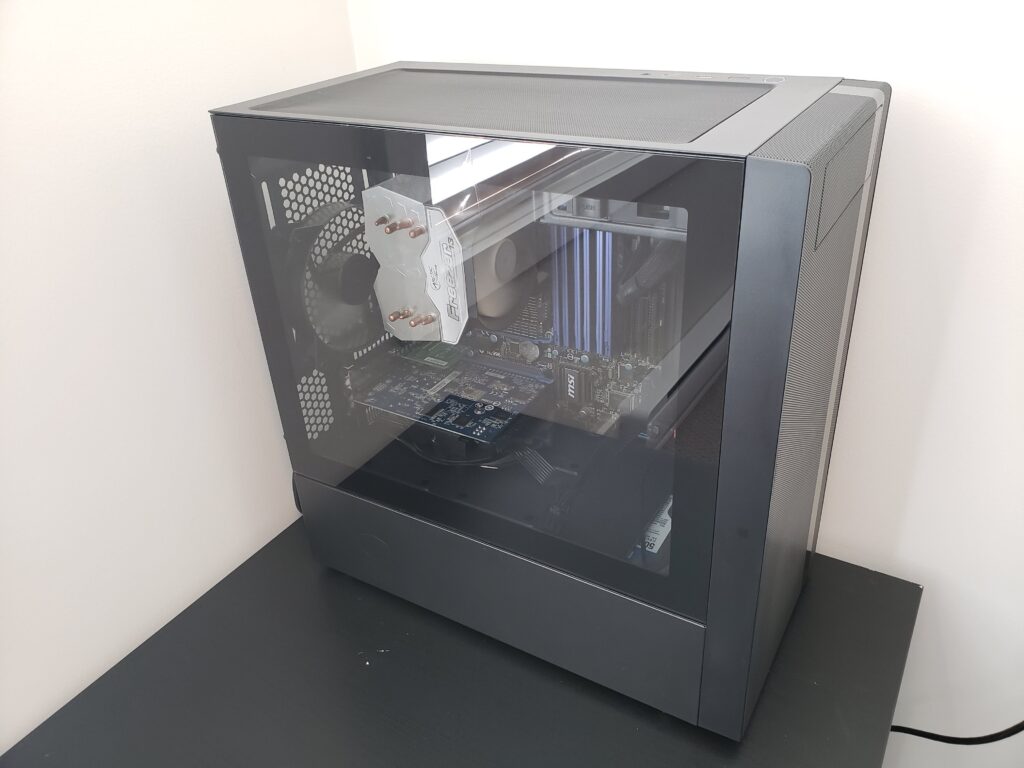Background
As a kid, I’ve always loved the idea of having a “server” at home – even if I couldn’t justify the electricity cost 🙂
The idea behind a “Homelab” is essentially being able to have one or many networked devices (such as computers and servers) which run software at home.
Some common use cases:
- An automated way to backup media (e.g. photos from your phone)
- Share media across your network (e.g. movies, music, photos, etc)
- Host your very own VPN
- Host a web server for web-development
- Host a Minecraft web server
- A way to learn virtualization and containerization
and the list goes on…
Homelab through the years – V1.0, V2.0 and V2.1
V1.0 (2011-2012)
- My first “Homelab” had the following specs:
- Hardware:
- A commercial grade router
- A PC with the following specs:
- Pentium 4
- 1GB of mismatched DDR2 RAM
- 80GB IDE HDD
- Software:
- Linux Mint (OS)
- Uses:
- Shared media across network
- Ran BTSync to sync university notes to laptop and desktop
- Dangerously port-forwarded ports 22, 80 – pretty vulnerable
- Hardware:
V2.0 (2012-2015)
- The hum and whine of the fans from V.1 was getting tiring, and my bedroom wasn’t getting any cooler
- I essentially replaced the server with a Raspberry Pi 1B
- No fans spinning and ran at a fraction of the electricity cost!
V2.1 (2012-2018)
- Added a Raspberry Pi 2B+ which I had connected to my TV and ran Kodi as my media center
Homelab v3.0 (2021 – present)
With the rise in cloud-based services like Google Photos, Netflix, etc. I had lost the value in having a Homelab, until now.
As with most cloud services, you have to balance the convenience vs privacy aspects of your data.
I do love cloud services and believe it’s here to stay, however I’d like to own the data that’s important to me, such as my notes and personal photos/videos.
Since Google Photos stopped their free unlimited uploads of 1080p media, I needed to have a way to back up our photos. Apart from mobile photos, I’d also like to back up our photos and videos captured on my mirrorless camera, without sacrificing quality through compression.
My goal was to:
- Re-purpose equipment I already had
- Purchase the essentials
- Local first, no intention to expose services to the wild web
Hardware:
- Main server:
- Hardware:
- Intel Xeon X5660 (picked this up for $12.99 on eBay 😛 – I swapped out the i7 920 I originally had)
- 24GB RAM (the LGA1366 board has 6 DDR3 RAM slots)
- 2 x 4TB IronWolf NAS drives
- 1 x 256 SSD (OS, VMs and containers)
- MSI Nvidia GTX650
- Software:
- Proxmox (bare metal)
- Openmediavault (VM)
- Ubuntu (VM)
- Nextcloud (Docker)
- Portainer (Docker)
- Ubuntu (VM) – Wireguard
- Use cases:
- Backing up photos from phones/camera
- Storing + backing up notes (I’m using Obsidian to make notes using .md files)
- General network storage and sharing
- Hardware:
- Raspberry Pis (2B and 3B+):
- PiHole (blocks ads across my local network)
- Network:
- Standard ISP router
- TP-Link 8 port Gigabit router

Next steps
- Continue learning about self-hosting applications, networking and security
- Upgrades, there’s always room for upgrades!



